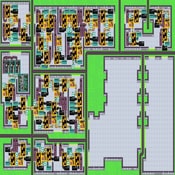
Factory Idle is a resource management game that puts players in charge of designing, optimizing, and expanding a constantly evolving industrial complex. You don’t win through action or reflex—you win by building systems that work smoothly without constant oversight. The goal is simple: create a factory that makes money, reinvest the profits into better systems, and watch your empire grow from a single conveyor belt into a humming machine of efficiency.
Players begin with a small factory floor, a few basic machines, and limited materials. From these humble beginnings, you must learn how to establish production chains that transform raw materials into valuable products. Each new element—be it a machine, conveyor belt, or power generator—adds to the complexity and efficiency of your operation. The game challenges you to think like an engineer, plotting layout paths, estimating output rates, and ensuring that no part of your line is underperforming.
Unlike many games that reward constant input, Factory Idle encourages stepping back and letting the systems do the work. Success is measured not just in money earned but in the smoothness of your factory’s operation. Players often find themselves rethinking entire sections of their factory layout just to shave seconds off a production cycle or to rebalance outputs between parallel lines.
Later stages of Factory Idle introduce higher-level tech that lets you customize production lines even further. Logistics centers, product routing, splitters, and storage buffers all become part of the design toolkit. The challenge becomes less about what machines you can afford and more about how to rearrange them for maximum output per unit of time. As your production tree grows, you’ll unlock items with longer crafting chains, requiring increased logistical finesse.
Factory Idle isn’t just about growth—it’s about smart growth. With every success, you’re invited to improve, adjust, and refine until your factory hums like a well-tuned engine. If you enjoy seeing a system evolve from chaos into precision, this game will keep you coming back for more.